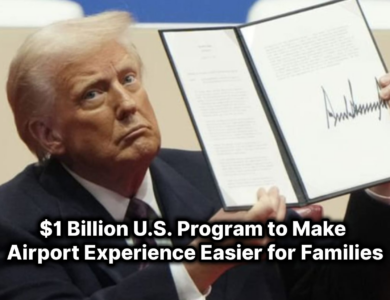European Aviation’s Competitiveness at Risk, Warns IATA’s Rafael Schvartzman
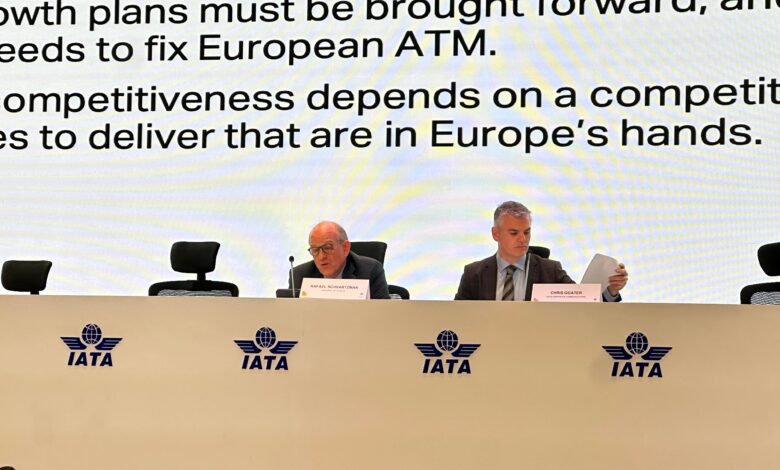
New Delhi – Speaking at the IATA Annual General Meeting (AGM) 2025 in New Delhi, Rafael Schvartzman, IATA’s Regional Vice President for Europe, delivered a stark assessment of the challenges facing European aviation. He warned that the sector’s competitiveness is under serious threat due to a series of regulatory, fiscal, and infrastructural issues—many of which, he emphasized, are self-inflicted.

Schvartzman began by underlining the fragile economic model underpinning European aviation. Despite being one of the most transparent and competitive markets globally, he noted that the industry struggles with low margins and high price sensitivity. Any additional cost—be it regulatory, environmental, or operational—can directly threaten the viability of routes, frequencies, and even entire airline operations. This in turn puts jobs, economic growth, and regional connectivity at risk.
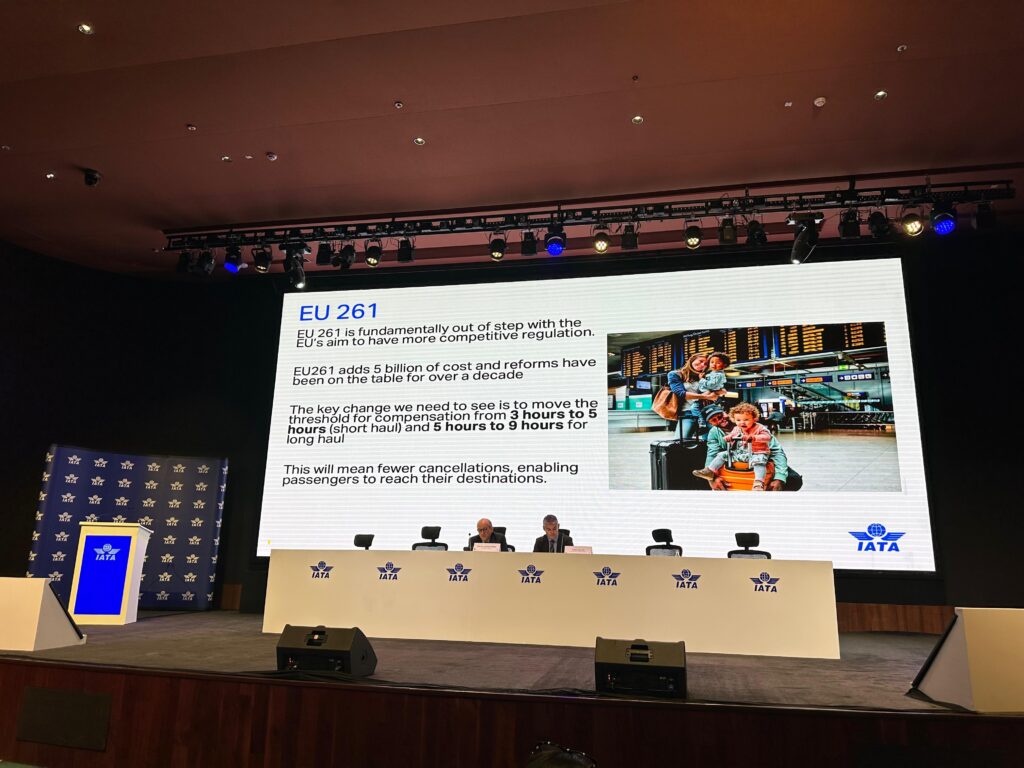
Highlighting the findings of the Draghi report, Schvartzman reminded the audience that aviation supports 15 million jobs and contributes $1.2 trillion to Europe’s GDP. However, he argued that a lack of coherent policy, outdated regulations, and mounting costs are placing this contribution in jeopardy.
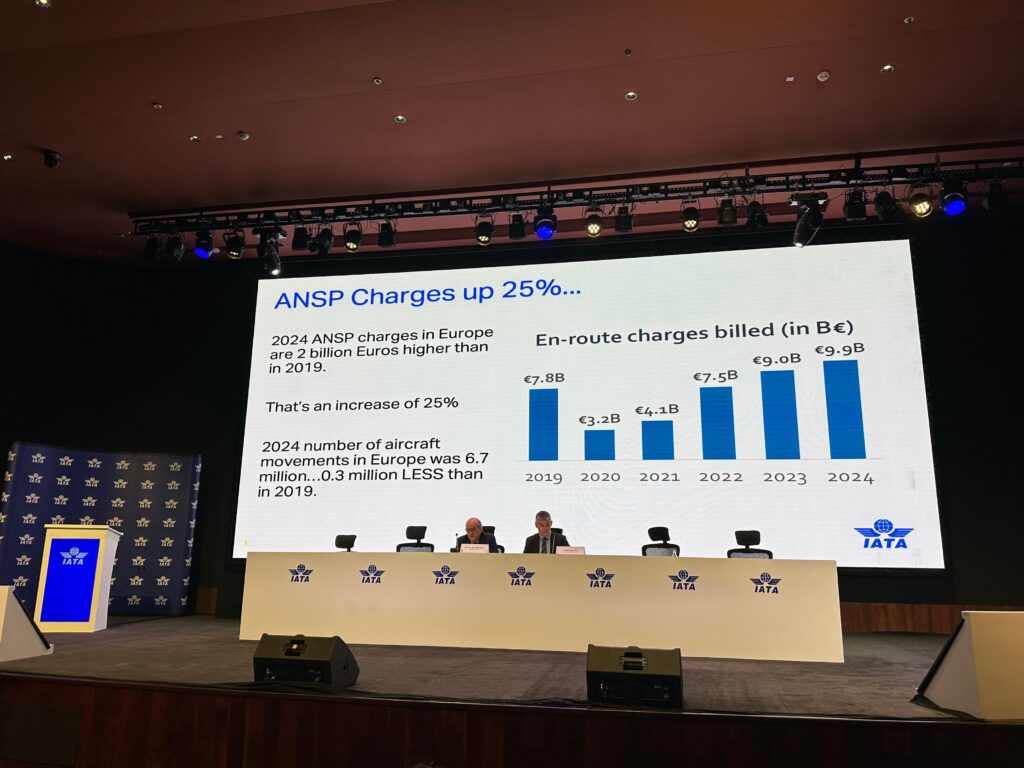
One of the primary issues he addressed was the current state of EU261, the European Union’s passenger compensation regulation. Describing it as outdated and heavily amended by judicial rulings—more than 80 times—he called it an administrative “mess” that adds at least €5 billion in annual costs to the industry. Rather than improving punctuality, Schvartzman claimed it encourages flight cancellations. IATA is advocating for reforms to the regulation’s delay compensation thresholds, proposing that airlines be allowed greater operational flexibility without facing disproportionate penalties.
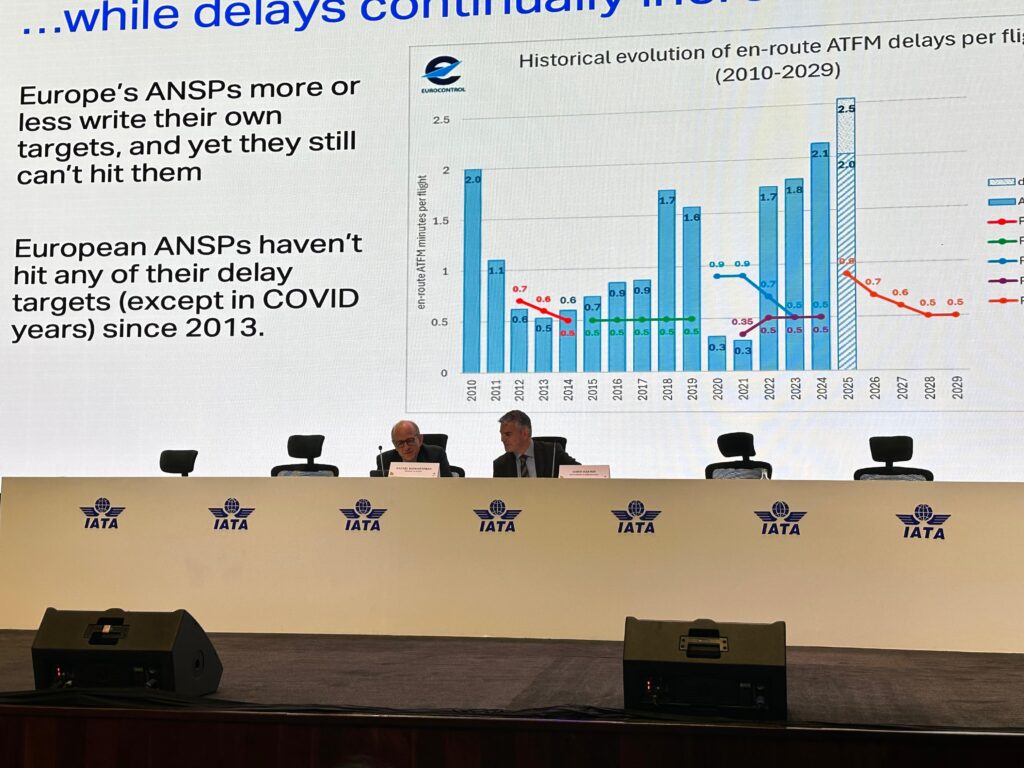
On the topic of sustainability, Schvartzman reaffirmed IATA’s commitment to achieving Net Zero emissions by 2050. However, he criticized the EU’s implementation of sustainable aviation fuel (SAF) mandates, which he said lacked transparency and placed excessive financial burdens on airlines. He noted that inflexible rules—such as requiring equal fuel uplift across different member states—and inconsistent application between ReFuelEU and EU ETS directives have only increased complexity and costs. More transparent pricing, flexible compliance mechanisms like “book and claim,” and harmonized reporting standards are among IATA’s proposed solutions.

Taxation was another key concern. Schvartzman pointed to the growing trend of increased passenger taxes in countries like France, the UK, the Netherlands, and Belgium, warning that these measures are ultimately counterproductive. While such taxes may appear to raise public revenue, they harm connectivity and economic activity—especially in peripheral regions that rely on air transport. He cited Sweden’s decision to abolish its passenger tax as a positive example and noted that Germany may follow suit.
Infrastructure performance and cost inefficiencies were also heavily criticized. Schvartzman highlighted that airports continue to raise fees while offering little improvement in service quality. Airlines, operating with average returns on investment below 7%, are significantly less profitable than airports—some of which enjoy ROIs as high as 21%, such as in Lisbon. A similar imbalance is evident among air navigation service providers (ANSPs). Despite handling fewer movements than pre-pandemic levels, their charges in 2024 were €2 billion higher than in 2019. He specifically named France and Germany as the two biggest contributors to Europe’s air traffic delays, with ANSPs failing to meet even modest performance targets. According to Schvartzman, the last time European ANSPs met delay benchmarks was in 2013.
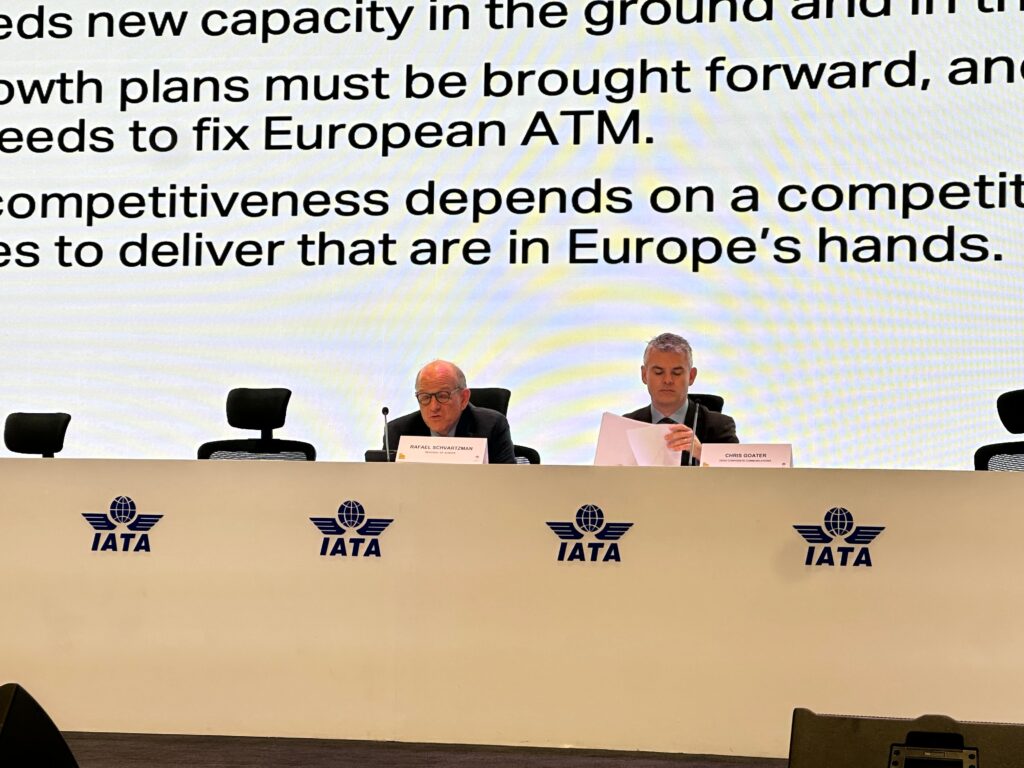
Turning to capacity, Schvartzman warned of a looming crisis. Major infrastructure projects remain stalled across the continent—from Lisbon and Poland to Heathrow—while capacity constraints at key hubs like Amsterdam continue to grow. Without meaningful expansion and efficiency reforms, he said, Europe risks falling behind in global connectivity.
Concluding his remarks, Schvartzman argued that many of the current challenges are political or regulatory in nature rather than market-driven. “Europe has the means to reverse this course,” he stated, “but it requires common-sense reforms, policy coherence, and a focus on long-term competitiveness rather than short-term revenue gains.”
During the Q&A session, Schvartzman addressed several questions from journalists. On EU261, he acknowledged resistance to reform but stressed the importance of allowing delayed flights to operate rather than cancelling them unnecessarily. He also responded to concerns about labor shortages, noting IATA’s work on training and consulting programs across Europe and Central Asia. Regarding taxation, he warned that high charges like the UK’s Air Passenger Duty could weaken the industry’s transition to sustainability even if short-term demand remains strong. Finally, he reiterated IATA’s commitment to digital transformation through initiatives like OneID and called on the EU to lead in implementing seamless travel technologies.
The session concluded with thanks to Schvartzman for his comprehensive insights into the structural challenges facing European aviation and the path forward.
